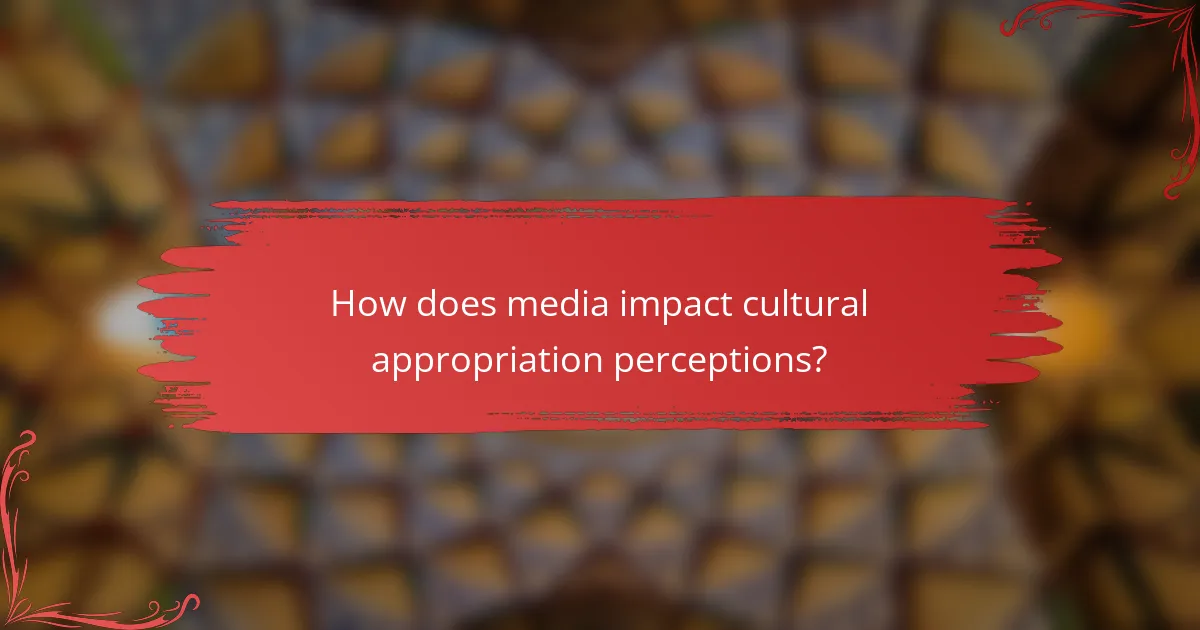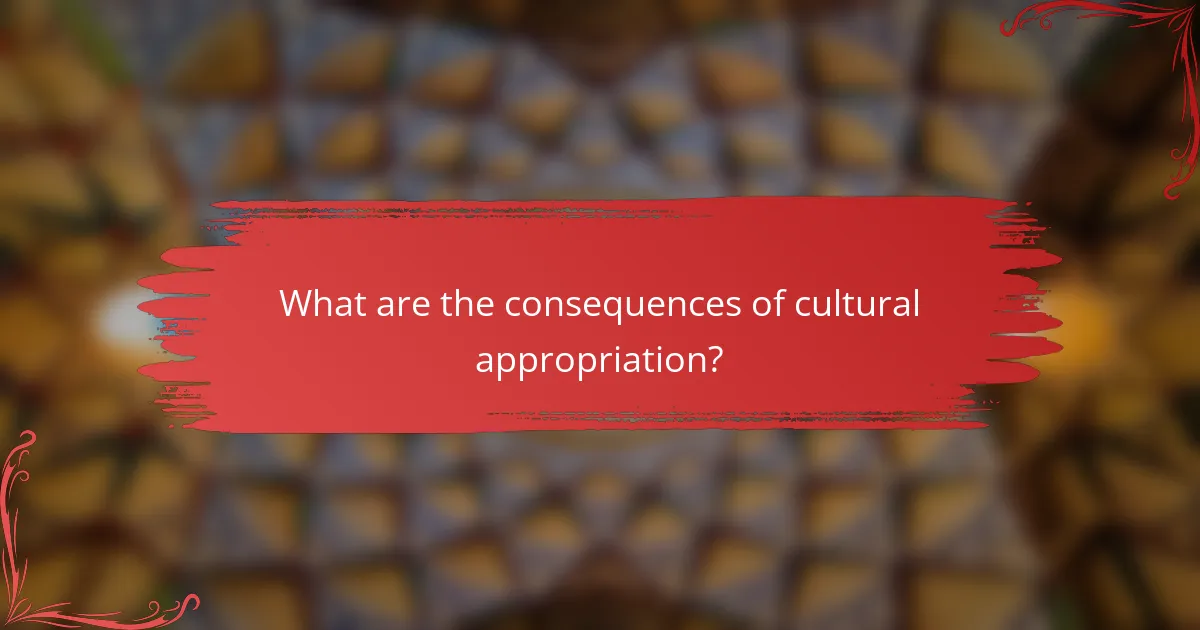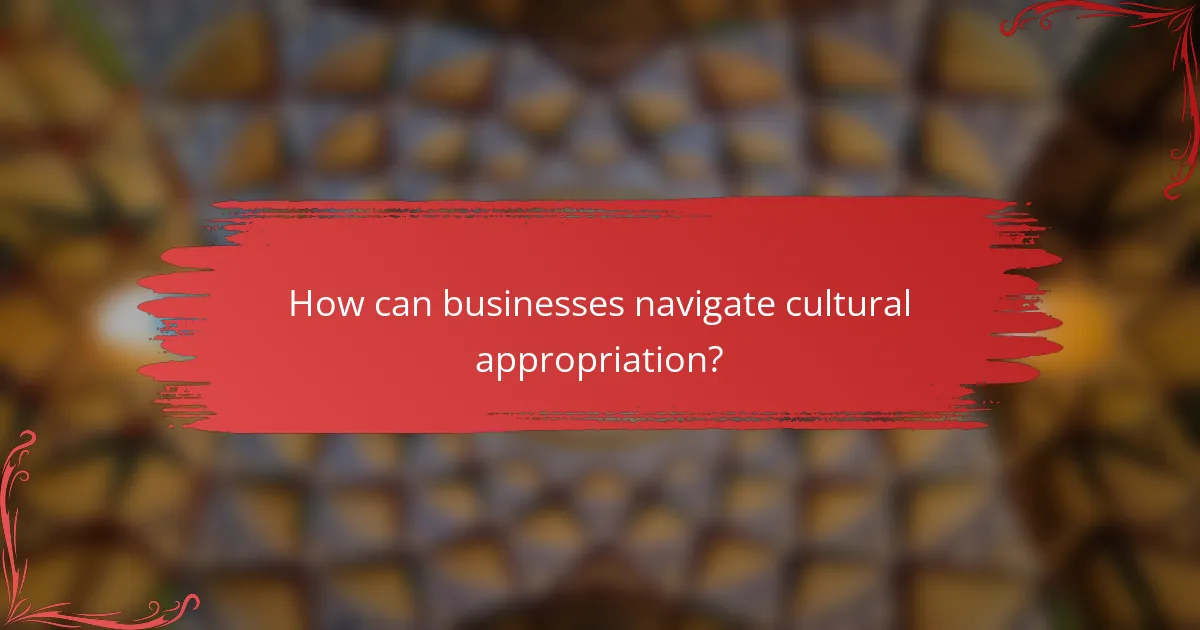Cultural appropriation raises important ethical considerations that emphasize the need for respect and understanding of original cultures. By adhering to guidelines that promote genuine appreciation and seeking permission for cultural elements, individuals can navigate these complexities responsibly. Furthermore, media plays a pivotal role in shaping perceptions, influencing public discourse, and highlighting the nuances between appropriation and appreciation.

What are the ethical guidelines for cultural appropriation?
The ethical guidelines for cultural appropriation focus on respecting original cultures, understanding their historical context, seeking permission for use, and promoting genuine cultural appreciation. These principles help navigate the complexities of borrowing cultural elements while minimizing harm and fostering mutual respect.
Respect for original cultures
Respecting original cultures involves acknowledging their significance and the people behind them. This means recognizing the value of cultural symbols, practices, and traditions, and avoiding trivialization or commercialization that can lead to misrepresentation.
For example, wearing traditional attire from another culture for fashion without understanding its meaning can be disrespectful. Instead, consider engaging with the culture in a way that honors its origins, such as learning about its history and significance.
Understanding historical context
Understanding the historical context of cultural elements is crucial in avoiding appropriation. This includes recognizing past injustices, power dynamics, and the impact of colonization on marginalized communities. Awareness of these factors can guide respectful engagement with cultural practices.
For instance, using indigenous symbols in art or fashion without acknowledging their historical significance can perpetuate stereotypes. Researching the background of these elements can help ensure that their use is informed and respectful.
Seeking permission and collaboration
Seeking permission and collaboration with members of the original culture is an essential step in ethical cultural exchange. This can involve consulting with cultural representatives or artists before using their cultural elements in your work.
For example, if you wish to incorporate traditional music or dance into a performance, collaborating with artists from that culture can lead to a more authentic representation and mutual benefit. This approach fosters dialogue and respect.
Promoting cultural appreciation
Promoting cultural appreciation means engaging with cultures in a way that values their contributions and fosters understanding. This can involve supporting cultural events, learning about traditions, and sharing knowledge respectfully.
Participating in cultural festivals or workshops can enhance appreciation and provide insight into the culture’s values and practices. This engagement should always prioritize the voices and experiences of those from the culture being appreciated.

What best practices should be followed?
To navigate cultural appropriation responsibly, it is essential to adopt best practices that prioritize respect and understanding. Engaging with cultural representatives, supporting authentic creators, and educating oneself on cultural significance are key strategies to ensure ethical interactions with diverse cultures.
Engaging with cultural representatives
Engaging with cultural representatives involves directly communicating with individuals from the culture you wish to learn about or represent. This approach fosters mutual respect and understanding, allowing for a more authentic exchange of ideas and practices.
Consider attending cultural events or workshops led by representatives of that culture. This not only provides firsthand knowledge but also supports the community financially and socially.
Supporting authentic creators
Supporting authentic creators means prioritizing work produced by individuals from the culture in question. This can include purchasing art, music, or literature directly from creators rather than from mass-produced sources that may exploit cultural elements.
Look for platforms that promote and sell works by these creators, such as local markets or online stores dedicated to cultural products. This ensures that the benefits of your support go directly to the community.
Educating oneself on cultural significance
Educating oneself on cultural significance is crucial for understanding the context and meaning behind cultural elements. This involves researching the history, traditions, and values associated with a culture before engaging with its symbols or practices.
Utilize books, documentaries, and reputable online resources to deepen your knowledge. Engaging in discussions with knowledgeable individuals can also enhance your understanding and appreciation of the culture.

How does media impact cultural appropriation perceptions?
Media significantly shapes perceptions of cultural appropriation by influencing public discourse and highlighting instances of appropriation or appreciation. The portrayal of cultures in media can either reinforce stereotypes or foster understanding, making it crucial to analyze how these representations affect societal views.
Influence of social media platforms
Social media platforms play a pivotal role in shaping discussions around cultural appropriation. They provide a space for marginalized voices to share their experiences and perspectives, often leading to viral conversations that can challenge or support cultural practices. For instance, hashtags like #CulturalAppropriation can mobilize awareness and prompt users to reflect on their actions.
However, the rapid spread of information can also lead to misunderstandings or misinterpretations. Users should be cautious about engaging in discussions without fully understanding the context, as this can perpetuate harm rather than foster dialogue.
Representation in film and television
Film and television are powerful mediums that can either perpetuate cultural stereotypes or promote authentic representation. When creators fail to accurately portray cultures, it can lead to accusations of appropriation, as seen in various high-profile films and series. Authentic representation involves hiring individuals from the culture being depicted, which can enhance credibility and respect.
Moreover, successful examples of representation can educate audiences and promote cultural appreciation. Shows like “Master of None” and films like “Black Panther” showcase diverse narratives that resonate with broader audiences while respecting cultural origins.
Case studies of media controversies
Several media controversies highlight the impact of cultural appropriation on public perception. For example, the backlash against certain fashion brands for using traditional designs without permission underscores the importance of acknowledging cultural origins. These incidents often lead to public outcry and calls for accountability, prompting brands to reconsider their practices.
Another notable case is the criticism faced by celebrities who adopt cultural elements in their fashion or music without understanding their significance. Such actions can trivialize important cultural symbols, leading to a broader conversation about respect and understanding in creative industries. These case studies serve as critical learning opportunities for both creators and consumers in navigating cultural sensitivity.

What are the consequences of cultural appropriation?
Cultural appropriation can lead to significant negative consequences, impacting both individuals and communities. These consequences often manifest as community backlash, loss of cultural identity, and potential legal implications.
Community backlash
When cultural appropriation occurs, it can provoke strong reactions from the affected communities. This backlash may include public protests, social media campaigns, or calls for boycotts against brands or individuals perceived as appropriators. Such responses highlight the importance of understanding and respecting cultural boundaries.
For example, a fashion brand that uses traditional patterns from a marginalized culture without permission may face severe criticism and loss of consumer trust. Engaging with communities before using their cultural elements can help mitigate backlash.
Loss of cultural identity
Cultural appropriation can dilute and distort the identity of the culture being appropriated. When elements of a culture are used out of context, it can lead to misunderstandings and misrepresentations that overshadow the original meanings and significance. This loss can affect community pride and heritage.
For instance, when sacred symbols are commercialized, it can alienate members of the culture who feel their traditions are being exploited. Maintaining cultural integrity requires sensitivity and respect for the origins of cultural expressions.
Legal implications
Cultural appropriation can also lead to legal challenges, particularly regarding intellectual property rights. While copyright laws vary by country, many cultures have traditional knowledge and expressions that may not be protected under standard intellectual property frameworks. This can leave communities vulnerable to exploitation.
In some cases, legal action may be taken against individuals or companies that profit from cultural elements without permission. Understanding local laws and seeking consent can help avoid potential legal issues and foster respectful cultural exchange.

How can businesses navigate cultural appropriation?
Businesses can navigate cultural appropriation by fostering respect and understanding for the cultures they engage with. This involves recognizing the significance of cultural elements and ensuring that their use is appropriate and consensual.
Developing inclusive marketing strategies
Inclusive marketing strategies focus on representing diverse cultures authentically and respectfully. Businesses should prioritize collaboration with community members to ensure that their messaging resonates positively and avoids stereotypes.
Consider conducting thorough research on the cultural elements you wish to incorporate. This includes understanding the history and significance behind symbols, attire, or practices. Engaging cultural consultants can provide valuable insights and help avoid missteps.
When creating campaigns, aim for representation that reflects genuine appreciation rather than exploitation. For example, featuring real stories or testimonials from individuals within the culture can enhance authenticity. Avoid using cultural elements solely for aesthetic appeal without context or understanding.
